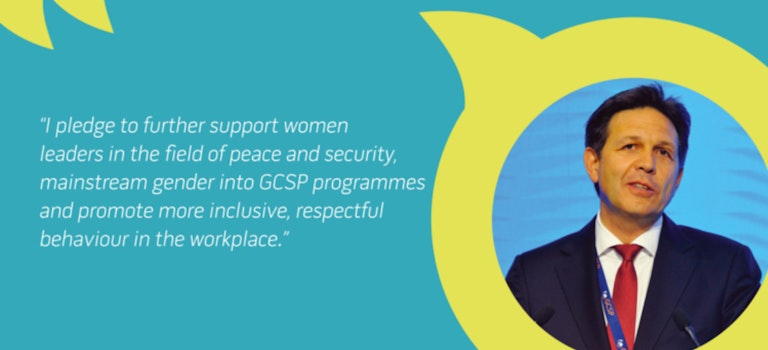LEVERAGING DIVERSITY AND LEADING INCLUSIVELY
Editorial by Ambassador Christian Dussey, Director of GCSP
Like many organisations in International Geneva, diversity is part of the Geneva Centre for Security Policy’s DNA, and our mission. As a centre which was founded to foster international cooperation for peace and security, we have been bringing together people with different perspectives from around the world since our inception in 1995. We have witnessed the fruits of diversity in the creative ideas and relationships of trust across borders that have evolved, including mid-career men and women representing countries involved in politically tense situations, such as the South China Sea territorial disputes, and debating very different viewpoints including military, civilian, humanitarian, academic and private perspectives. However, we recognise that fostering a truly inclusive culture for collaborative behaviours and critical thinking, requires constant work, and a certain kind of leadership.
Although evidence continues to grow about the benefits of ‘diversity and inclusion’ for high performance and impact, as well as gender parity, across sectors and organisations, the reality is that many organisations struggle to lead groups in such a way as to get the most out of available talent. Assumptions, bias and traditions can easily get in the way, and whilst each individual should be respected and valued, that is not always the reality, as has been evidenced in recent cases of sexual harassment and abuse in organisations across this and unfortunately all sectors. In many large, hierarchical organisations, leading from the top is a dominant cultural characteristic, and the leadership is male dominated. So how should we be leading?
My colleagues at the GCSP-CCL Leadership Alliance suggest that we should be leading inclusively. Leading inclusively embraces the resounding evidence that greatest team performance happens when everyone leads at the times needed for them to do so. There is not a job today that does not require judgement and influence, whether responding to crisis or improvising to ensure delivery of humanitarian assistance in turbulent regions, or organising a summit among negotiating parties. Judgements and decisions are made increasingly by nearly every team member. The ‘trick’ is in facilitating the direction and alignment of these leaders, not in controlling them from top-down.

I can say from experience, that leading inclusively is easier said than done, especially when there are tensions and polarities between collective results and individual goals, between collaboration and entrepreneurship. Respect is an essential starting point, and we are fortunate to work in an environment where there is a high level of commitment by colleagues. However, it takes time to build trust, to create a space where conflict becomes constructive, to understand how power dynamics manifest themselves, and to develop systems and methods to overcome biases and assumptions. If we get it right, the prize is worth having: we can leverage our collective intelligence and impact to find creative solutions to the complex challenges we face.
The GCSP-CCL Leadership Alliance has developed a new course specifically targeting team leaders, who have a critical role to play in leading inclusively and role modelling behaviour: ‘Leading Inclusive Teams’. The course will be introducing the mindsets, skillsets and toolsets to lead high performing teams, build trust, accountability and commitment, as well as techniques to creatively lead tensions arising from conflict and polarity. If you are intrigued by ‘What Superchickens and Teams have in Common?’ and ‘Flipping diversity into inclusiveness’, do read the course Co-Directors' recent blog posts. We hope to welcome you to the Maison de la Paix soon.
This editorial was written by Ambassador Christian Dussey, Director of the GCSP, who is proud to be a Gender Champion and part of the International Gender Champions network.
